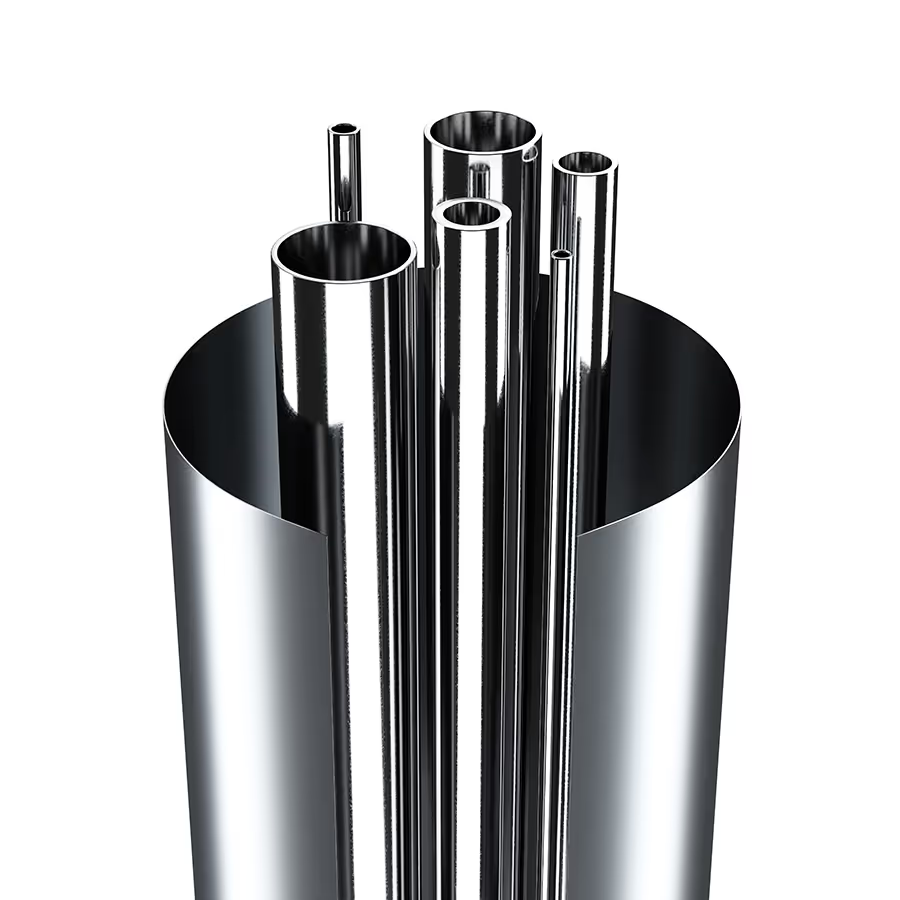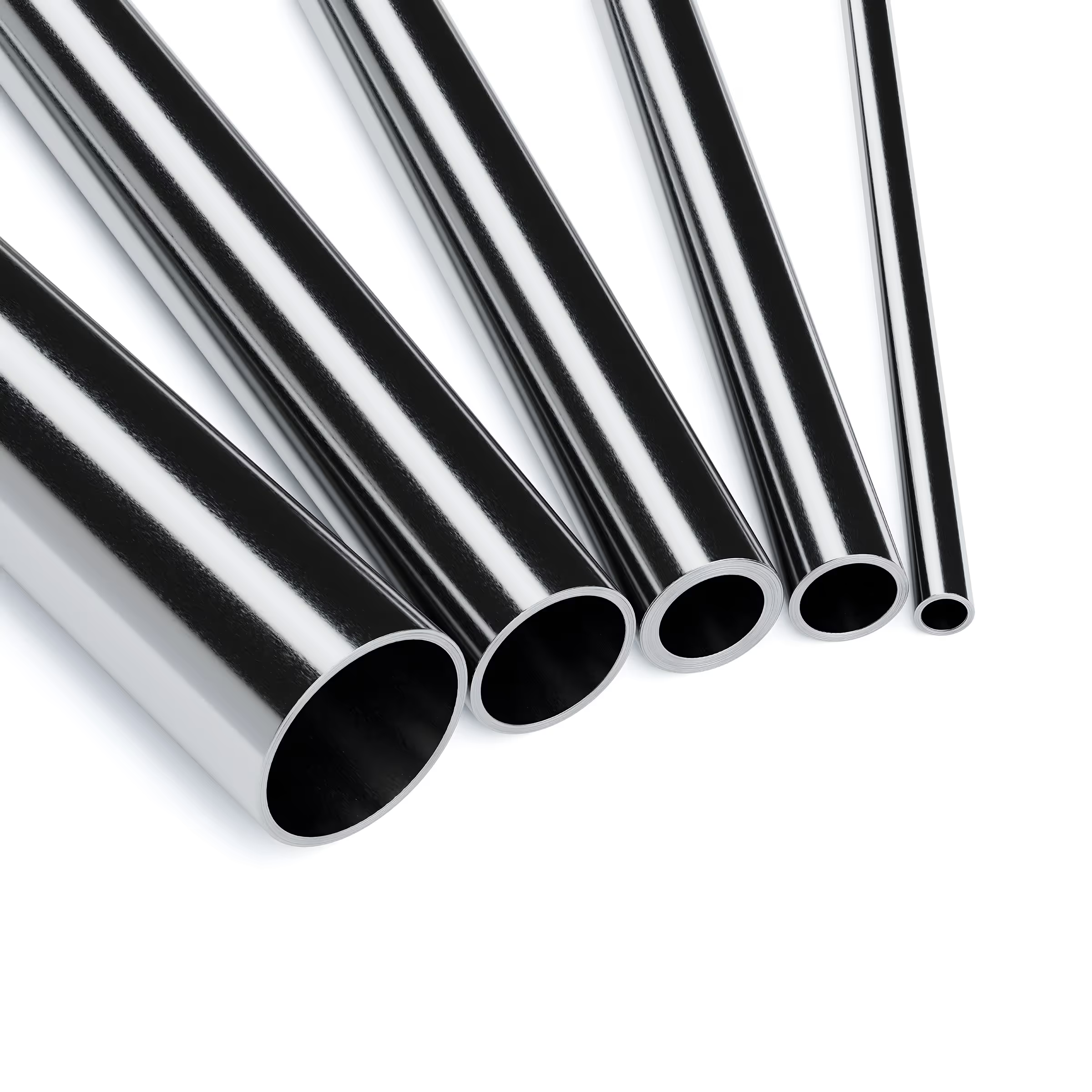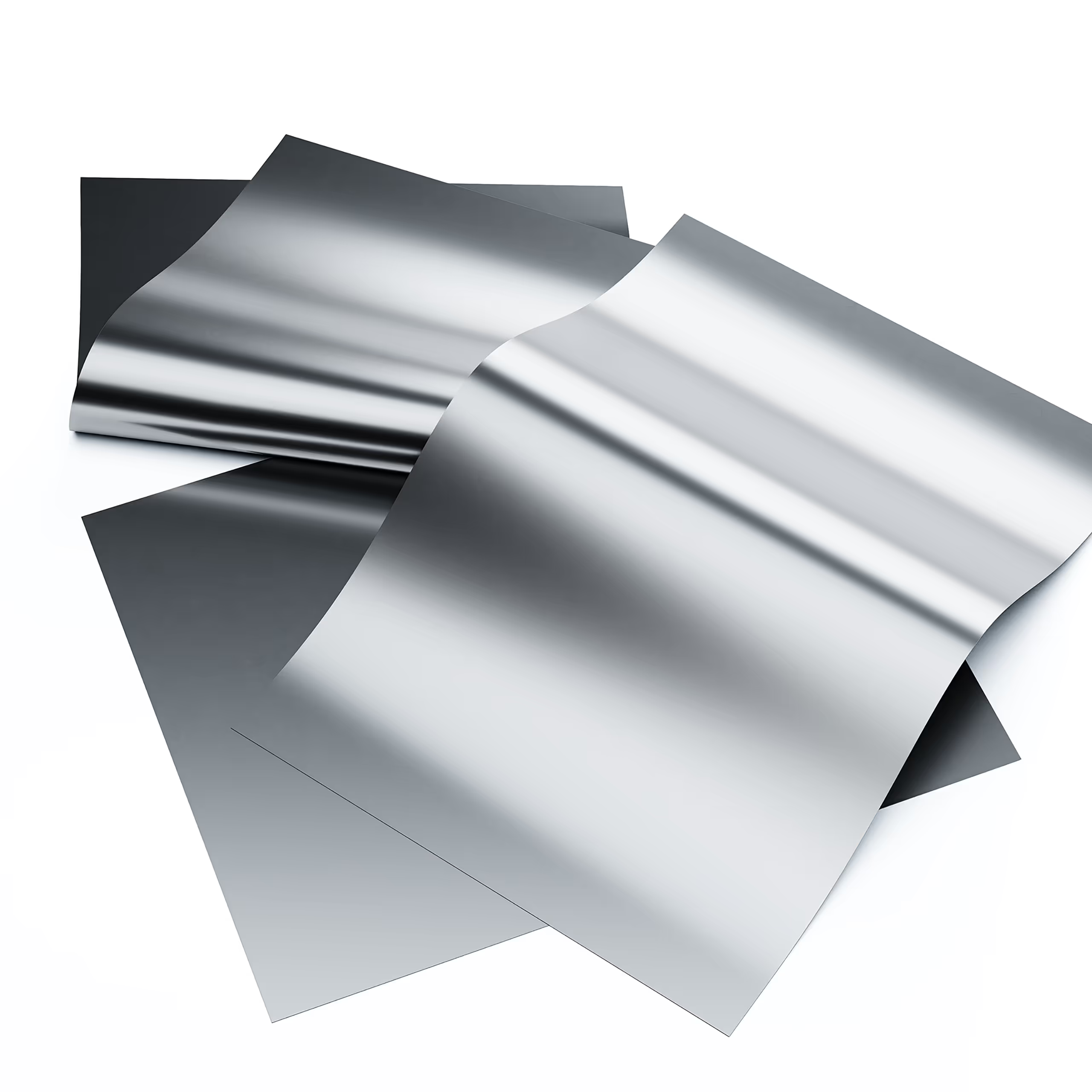Medical device companies need a partner who can offer high quality, comprehensive solutions, to help manufacturers develop competitive technologies that are first to market.
.avif)
.avif)
.avif)
.avif)
.avif)
.avif)
.avif)
.avif)
.avif)
%20(1)-p-800%20(2).png)
Nitinol is a nickel-titanium alloy known for its unique properties of shape memory and superelasticity. These characteristics allow it to return to a preset shape and withstand large amounts of deformation without permanent damage. In medical devices, nitinol is widely used because it offers flexibility, kink resistance, and fatigue durability — essential for navigating complex anatomies and maintaining device performance over time. Its biocompatibility and strength make it a material of choice for stents, guidewires, heart valve frames, and other minimally invasive technologies.
%20(2)%20(1).png)

Download the full specifications sheet now.
Download the technical sheet

Nitinol sheet and foil
World-class nitinol sheets capable of exceptional thickness uniformity at extreme thinness
Nitinol tube
High reliability nitinol tubing optimized for catheter delivery systems and can additionally be laser processed into complex structures



Nitinol sheet and foil
10% of thickness
Nitinol tube
Range + 0.0005 - 0.002 in.
.avif)


Nitinol sheet and foil
Thickness
0.002 - 0.090 in.
Width
4 in. max
Length
20 in. max
Nitinol tube
Outer Diameter Range
0.010 - 0.393 in.
Inner Diameter Range
0.006 - 0.300 in.



Nitinol sheet and foil
Nitinol tube



Manufacturing Technologies Deployed:
Femtosecond laser cutting and laser ablation
Electropolishing
Semi-automated laser welding
Shape-setting and wire forming
Nitinol tube
Superelastic
Shape memory
Custom



Nitinol sheet and foil
Meets or exceeds all applicable ASTM nitinol standards
Nitinol tube
High reliability nitinol tubing optimized for catheter delivery systems and can additionally be laser processed into complex structures
.avif)
| Nitinol sheet and foil | Nitinol tube | |
|---|---|---|
| Description | World-class nitinol sheets capable of exceptional thickness uniformity at extreme thinness | High reliability nitinol tubing optimized for catheter delivery systems and can additionally be laser processed into complex structures |
| Tolerance | 10% of thickness | Range + 0.0005 - 0.002 in. |
| Dimensional | Thickness: 0.002 - 0.090 in. Width: up to 26 inches Length: 20 in. max | OD Range: 0.010 - 0.393 in. ID Range: 0.006 - 0.300 in. |
| Surface finish |
|
|
| Active Af | Superelastic / Shape memory / Custom | |
| Quality | Metallurgical testing | Meets or exceeds all applicable ASTM nitinol standards | |
Lighteum Medical is cost competitive, moves large volumes, and is a critical vendor of nitinol for us …”
Senior Director
Leading Electrophysiology Mapping Catheter OEM
%20(2).avif)
.avif)
An advanced material like Nitinol possesses critical physical and mechanical properties and offers elegant solutions to meet complex anatomical and physiological needs. Nitinol’s biocompatibility, kink resistance, superelasticity and ability to shape set, helps medical device designers to develop next-generation medical devices.


When a shape memory alloy is in its martensitic form, it is easily deformed to a new shape. However, when the alloy is heated through its transformation temperatures, it reverts to austenite and recovers its previous shape with great force. This process is known as shape memory.
The temperature at which the alloy remembers its high temperature form when heated can be adjusted by slight changes in alloy composition and through heat treatment. In the nickel titanium alloys, for instance, it can be changed from above +100 deg.C to below -100 deg.C. The shape recovery process occurs over a range of just a few degrees and the start or finish of the transformation can be controlled to within a degree or two if necessary.
These unique alloys also show a superelastic behavior if deformed at a temperature which is slightly above their transformation temperatures. This effect is caused by the stress-induced formation of some martensite above its normal temperature. Because it has been formed above its normal temperature, the martensite reverts immediately to undeformed austenite as soon as the stress is removed. This process provides a very springy, "rubberlike" elasticity in these alloys.
Both forms the nitinol alloy are...
Martensite is...
Austenite is...


The use of a nitinol shape memory or superelastic element for a particular application generally requires the setting of a custom shape in a piece of nitinol. The process required to set the shape is similar whether beginning with nitinol in the form of wire, strip, sheet, tubing, rod or bar. Shape setting (or training) is accomplished by constraining the nitinol element on a mandrel or fixture of the desired shape and applying an appropriate heat treatment. The heat treatment methods used to set shapes in both shape memory and superelastic forms of nitinol are similar.
The heat treatment parameters chosen to set both the shape and the properties of the part are critical, and usually need to be determined experimentally for each desired part's requirements. In general, temperatures as low as 400 deg.C and times as short as 1-2 minutes can set the shape, but generally one uses a temperature closer to 500 deg.C and times over 5 minutes. Rapid cooling of some form is preferred via a water quench or rapid air cool (if both the parts and the fixture are small). Higher heat treatment times and temperatures will increase the actuation temperature of the part and often gives a sharper thermal response (in the case of shape memory elements). However, there is usually a concurrent drop either in peak force (for shape memory elements) or in plateau stresses (for superelastic elements). There is also an accompanying decrease in the ability of the Nitinol element to resist permanent deformation.
A final caution that one should observe is that heat treatment fixtures can be surprisingly sluggish in reaching the desired temperature in air or vacuum furnaces. The desired nitinol shapes and properties are imparted largely by the time at the maximum temperature, so be careful that your parts actually reach the desired temperature and time. More massive elements (e.g., bars and rods) will therefore require longer times to allow for the temperature of the part to equilibrate.


Nitinol is a family of shape memory alloys, which are not completely described using typical engineering properties. In concert with ASTM Standards, it is important that the nitinol specification contain sufficient information to adequately meet the needs of the product for which it is being produced without over specifying properties that are not appropriate.
ASTM International, in conjunction with the nitinol community, has issued several standards that aid in specifying requirements for nitinol.
Current commercially available nitinol forms include: sheet, tube, wire and ribbon, and components fabricated from each product form.
Nitinol sheet is one of the newest, and most exciting product forms. It is available in rolled thicknesses down to 0.0007", widths up to 3.75" (based on thickness), and lengths up to 18” (based on thickness and width).
Typical applications include laser cutting and/or photochemical etching to manufacture complex components.
Johnson Matthey is a leader in large diameter, thin wall, and microlumen tube. Outer diameters as large as 0.325" with wall thicknesses as thin as 0.004” are now available. Microlumen Flextube® with outside diameters as small as 0.0095" can be produced with inside diameters of 0.006”. For most applications, the wall thickness should be chosen to be greater than ten percent of the outer diameter to avoid buckling.
Typical applications include laser cut stents, endoscopic guide tubes, and distal protection devices. Commercial availability is limited to O.D. to I.D. ratios from 1.1 to 1.8.
Many unique nitinol components are fabricated into a wide variety of applications today. These include ground shape set guidewire cores, stents, blood filters, orthodontic arches, surgical instrumentation, dental clips, trocar-pointed rods, photochemically etched stents, and shaped helical forms.
Nitinol is a simple binary mixture of nickel and titanium at about 50 atomic percent each (about 55 percent by weight of nickel). However, subtle adjustments in the ratio of the two elements make a large difference in the properties, particularly the transformation temperatures, i.e., the temperatures at which the crystal structure changes from austenite to martensite or vice versa. The sensitivity of the transformation temperature to composition is so great that chemistry is not used to specify the alloy. Instead, transformation temperature is the most accurate means to specify the alloy. The temperature most frequently specified for the finished product is the Active Austenite Finish Temperature, Active A(f). This is determined using ASTM F 2082, commonly called the bend free recovery test. Typical tolerances for Active A(f) are +/- 5 C. For superelastic materials the Active A(f) must be below the product use temperature.
For shape memory materials, the Active A(f) determines the completion of the shape recovery transformation upon heating. The transformation temperatures change due to mechanical processing and annealing, therefore the Active A(f) will be different than the transformation temperature of the original ingot. In most applications, specifying the transformation temperature of the final product, Active A(f), is sufficient; however, the transformation temperature of the original ingot may be specified. The ingot transformation temperature is determined by DSC per ASTM F 2004. Typical tolerances for the Ingot A(p) are +/-5 C. Below is a list of the typical materials offered by Johnson Matthey.
| Common name* | Ingot A(p) | Active A(f)* | Description |
|---|---|---|---|
| N | -20 C to -5 C | 0 C to 20 C | High nickel super elastic nitinol |
| S | -5 C to 15 C | 10 C to 20 C | Super elastic nitinol |
| C | -20 C to -5 C | 0 C to 10 C | Chromium doped super elastic nitinol |
| B | 15 C to 45 C | 20 C to 40 C | Body temperature nitinol |
| M | 45 C to 95 C | 45 C to 95 C | Mid temperature range nitinol |
| H | > 95 c | 95 C to 115 C | High temperature range nitinol |
* Common alloy name for reference only. Please specify Active A(f).
This product form takes advantage of the stress-induced martensitic transformation to achieve incredible amounts of flexibility, strain recovery, and kink resistance. Nitinol behaves superelastically if the Active A(f) temperature is below its use temperature. Applications that are intended to be superelastic at room temperature are generally produced with an Active A(f) temperatures below room temperature in the range of 0 C to 20 C. A superelastic material will remain superelastic up to a temperature from the Active A(f) to a temperature about 50 C above Active A(f). Therefore a material with an Active A(f) of about 15 C will exhibit good superelasticity up to about 65 C. Commonly used super elastic materials are N, S, and C. Alloy C contains a small amount of Chromium which increases the strength of the upper and lower plateau stresses. Please contact Johnson Matthey for more information regarding the use of Alloy C.
This product form exhibits the ability to recover a shape upon heating above Active A(f). Therefore, the most critical property to specify is the Active A(f). This represents the finish of the transformation from martensite to austenite upon heating, and therefore the temperature at which the shape recovery is also complete. The start of the transformation upon heating is the Austenite Start Temperature, A(s), and is about 15 C to 20 C lower than the Active A(f).
Upon cooling, there are comparable start and finish transformation temperatures for the reverse transformation from austenite to martensite. These are known as M(s) and M(f), respectively. The M(f) temperature is about 15 C to 20 C lower than M(s). There is a hysteresis in the transformation, meaning that the transformation to martensite upon cooling is below the temperature at which the martensite reverts to austenite upon heating. For binary shape memory materials, the difference between M(p) and A(p) is 25 C to 50 C. There is a peak in the transformations from austenite to martensite, and martensite to austenite, and this information is captured as A(p) and M(p) temperatures during DSC testing per ASTM F2004.
Nitinol is processed by hot working followed by a cold working with complete annealing cycles between cold working steps. The final two processing operations are cold working a precise amount followed by a low temperature heat treatment. For cold drawn wire and rolled ribbon, the final cold work is typically 30 to 50 percent. For FLEXTUBE® and sheet, the final cold work is generally less, but is usually greater than 20 percent. Sheet is typically cold worded greater than 20 percent after the last full anneal. The specific cold work level is determined by the mechanical property requirements and processing limitations. After cold working, the nitinol undergoes a heat treatment to bring out the superelastic or shape memory properties and to achieve the proper balance of final mechanical properties. Active A(f) values can only be determined after this final heat treatment.
The specific terms which may be used to specify nitinol are:
Nitinol forms a natural oxide during processing which is also used as a lubricant carrier. The oxide is primarily TiO2. For as-drawn wire and ribbon, the oxide is carefully controlled and is generally a light amber brown oxide or shiny black. For drawn FLEXTUBE, the oxide generally ranges from dark blue to gray. If desired, chemical pickling, mechanical polishing, or centerless grinding can remove the oxide.
Depending on the final application, it may be necessary to specify some mechanical properties. These may include ultimate tensile strength (uts) and elongation to failure. For superelastic alloys loading plateau, unloading plateau, and residual plastic strain (permanent set) may also be specified. Typical values for superelastic nitinol are given in the table below:
| Materials | Typical as drawn properties* | Typical as straight annealed properties* | |||||
| UTS (KPSI) | % elongation at failure | UTS (KPSI) | % elongation at failure | Leading plateau (KPSI) | Unloading plateau (KPSI) | Residual strain percent | |
| Cr doped | 270 +/- 15 | 6% min | 220 +/- 15 | 12% min | 70 min | ~50 | < 0.25 |
| A(f) 10 C | 270 +/- 15 | 6% min | 210 +/- 15 | 12% min | 65 min | ~30 (15 to 45) | < 0.25 |
| A(f) 10 C | 250 +/- 15 | 6% min | 200 +/- 15 | 12% min | 65 min | ~20 (2 to 35) | < 0.25 |
* All properties are measured at room temperature. The loading and unloading plateaus for straight annealed materials will be approximately 10 KPSI to 20 KPSI higher at 37 C.
** Properties for FLEXITUBE and sheet may be different.


In many cases, nitinol is substituted in an application which has traditionally used stainless steel. In most cases, the nitinol is substituted to take advantage of its unique superelasticity or shape memory capabilities.
| Property | Nitinol | Stainless steel |
|---|---|---|
| Recovered elongation | 8% | 0.8% |
| Biocompatibility* | Excellent | Fair |
| Effective modulus** | approx. 48 GPa | 193 GPa |
| Torqueability | Excellent | Poor |
| Density | 6.45 g/cm3 | 8.03 g/cm3 |
| Magnetic | No | Yes |
| UTS | approx 1,240 MPa | approx. 760 MPa |
| CTE | Martensite - 6.6 x 10-6 cm/cm/deg.C | 17.3 x 10-6 cm/cm/deg.C |
| Austenite - 11.0 x 10-6 cm/cm/deg.C | 95 C to 115 C | |
| Resistivity | 80 to 100 micro-ohm*cm | 72 micro-ohm*cm |
*Please see nitinol compatibility for more information
** The modulus of nitinol is highly non-linear, and it is not nearly as stiff as stainless steel.


Upon heating or cooling, NiTi alloys do not completely undergo their phase transformation at one particular temperature. Instead, the transformation begins at one temperature (known as the start temperature) and is completed at another temperature (known as the finish temperature). Further, there is a difference in the transformation temperatures upon heating from martensite to austenite and cooling from austenite to martensite, resulting in a delay or "lag" in the transformation. This difference, known as the transformation temperature hysteresis, is generally defined as the difference between the temperatures at which the material is 50% transformed to austenite upon heating and 50% transformed to martensite upon cooling. This value can be approximated by the difference between Ap and Mp on a DSC curve. Typical values for binary NiTi alloys are about 25 to 50 deg.C.
In addition to the hysteresis, the overall span of the transformation may be important. If the device being designed requires complete transformation upon both heating and cooling, then the difference between Af and Mf (the finish temperatures of the transformations to austenite and martensite, respectively) must be considered. Typical values for the overall transformation temperature span are about 40 to 70 deg.C.
Both the hysteresis and the overall transformation temperature span are slightly different for different NiTi alloys. Further, alloying can greatly affect the transformation hysteresis. Copper additions have been shown to reduce the hysteresis to about 10 to 15 deg.C and Niobium (Columbium) additions can expand the hysteresis to over 100 deg.C. Cold working and heat treatment have less dramatic, but still measurable effects on the transformation hysteresis. The table below shows the differences in hysteresis and overall temperature span for some different binary alloys.
Ex numbers | Mf | Mp | Ms | As | Ap | Ap | Hysterisis (Ap- Mp) | Overall temp. span (Af- Mf) |
|---|---|---|---|---|---|---|---|---|
| 1 | -53 | -40 | -33 | -24 | -14 | -5 | 26 | 48 |
| 2 | -45 | -30 | -24 | -15 | -3 | +7 | 27 | 53 |
| 3 | -3 | +3 | +6 | +23 | +30 | +35 | 27 | 38 |
| 4 | 24 | 31 | 36 | 54 | 66 | 71 | 35 | 45 |
| 5 | 59 | 68 | 79 | 100 | 114 | 121 | 46 | 62 |
These numbers should provide some assistance when designing a device which utilises the shape memory effect. For example, if one were designing a device to activate at boiling water temperature (100 deg.C) that also must be fully re-transformed to martensite at room temperature (20 to 25 deg.C), there is a narrow set of binary alloys which meet the criteria. From the above table, one can estimate that one should consider alloys with As of approximately 60 to 80 deg.C to satisfy both criteria. Similarly, an alloy designed to be completely transformed by body temperature upon heating (Af < 37 deg.C) would require cooling to about -10 deg.C to fully re-transform to martensite.


For almost any use of a Nitinol Shape Memory Alloy, it is highly desirable that one knows the Transformation Temperatures (TTRs) of the alloy. The TTRs are those temperatures at which the alloy changes from the higher temperature Austenite to the lower temperature Martensite, or vice versa.
There are numerous ways of performing transformation temperature testing, but three are in common use with Nitinol alloys to provide helpful data to product designers -- Constant Load, DSC, and Active Af.
First, it is straightforward to apply a load to the alloy and monitor its deformation and shape recovery simultaneously with temperature as the material is cooled and heated through the transformation range. For example, the elongation and contraction of a shape memory wire under tensile loading is shown in Figure 1 as the temperature is lowered and subsequently raised. Generally, the specific load that the material will see in the actual application is used for the test to simulate the conditions in practice. The temperature points noted are ones frequently used to describe the behaviour of a particular alloy. Ms is where the Martensite starts to form on cooling and Mf is where Martensite finishes; As marks the start of Austenite formation on heating while Af identifies the finish of the transformation to Austenite and completion of shape recovery. This type of test is generally used for applications which utilise the shape memory effect (not superelasticity) in Nitinol.
Be aware that the TTRs are stress dependent parameters, i.e., the TTRs will be different under different loads. In order to determine the TTRs at zero stress, a curve such as that shown in Figure 1 must be obtained at two or more stress levels. The particular transformation point of interest can then be extrapolated to zero stress. A side benefit of the stress dependent nature of the transformation is that the transformation temperature can be precisely tuned in many actuator applications by making small adjustments to the bias force acting against the shape memory element.
A precise method of determining the TTR values at zero stress, but one requiring an expensive instrument, is to use a Differential Scanning Calorimeter (DSC). This DSC method yields a plot such as Figure 2 by measuring the amount of heat given off or absorbed by a tiny sample of the alloy as it is cooled or heated through its phase transformations. The DSC yields excellent, repeatable results on fully annealed samples (annealed at temperatures above 700 deg.C for sufficient time to achieve a full anneal, generally about 10 to 15 minutes for small samples). One important drawback to the DSC method is that tests on partially cold worked materials, such as those used to optimise, can yield poor, inconclusive results. This same drawback also may apply to samples which have undergone a heat treatment in the range of 400 to 600 deg.C following cold working. The Constant Load or Active Af tests are recommended for material in these conditions.
Fully annealed DSC results are often used as the basis for NiTi raw material selection since they effectively characterise the baseline properties of the material prior to cold working and heat treatment.
The third common method of determining TTRs is known as the Active Af (or Functional Af) test, also known as a Water Bath or Alcohol Bath test. This test is conducted by merely bending a sample of the alloy, such as a wire, while it is below Ms and then monitoring the shape recovery while it is heated.
For instance, if a wire is gently bent into a hairpin shape (180 degree bend) by finger pressure, then warmed slowly in a stirred liquid bath while monitoring bath temperature, one can easily measure the retained bend angle at specific temperatures. Plotting this data (as in Figure 3), one finds that the curve reaches zero retained bend angle at Af. The radius of the initial 180 degree bend should not be smaller than 10 times the wire diameter for complete bend recovery. This method, while not very sophisticated, will yield surprisingly accurate, repeatable results if performed carefully, and it requires very little experimental apparatus.
Note that testing superelastic materials by this method requires starting at about -50 deg.C. A bath of crushed dry ice and alcohol is recommended for testing in this range. A water bath may be appropriate for higher temperature alloys. This test method is frequently used for recording the Af of superelastic materials for guidewires and other applications.
Other methods such as measuring resistivity changes have been used to measure TTRs. However, the above three techniques will serve the needs of most researchers and development engineers who need to characterise or perform Quality Assurance tests on their materials.